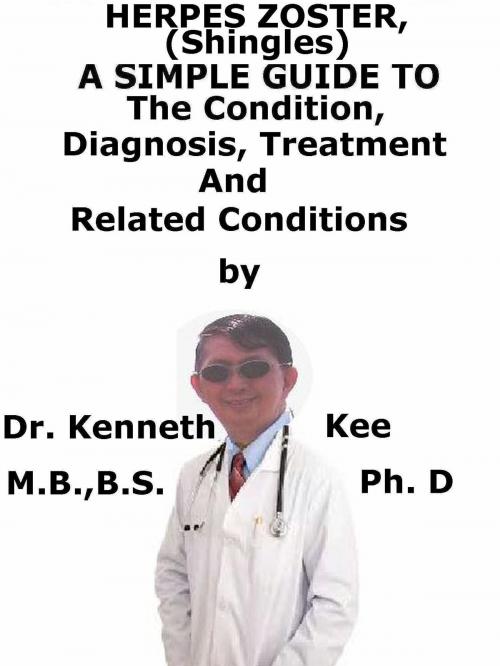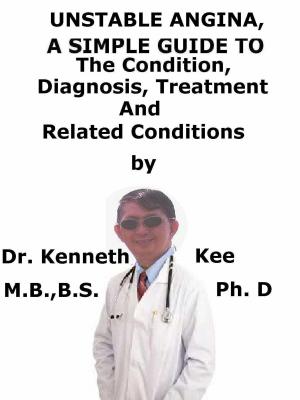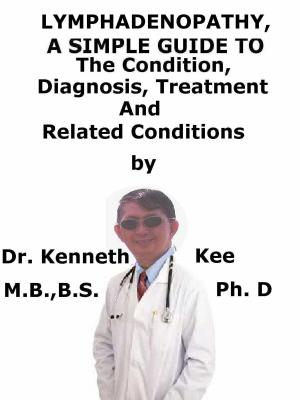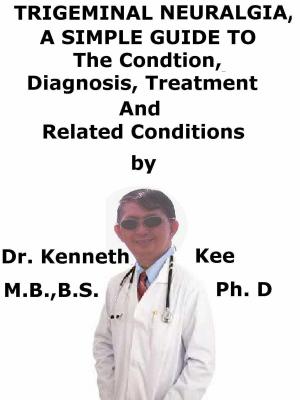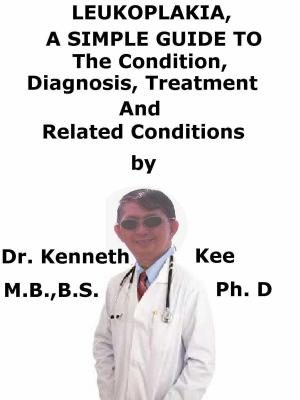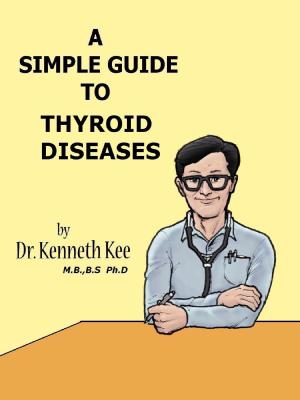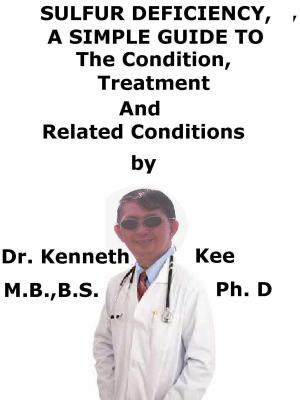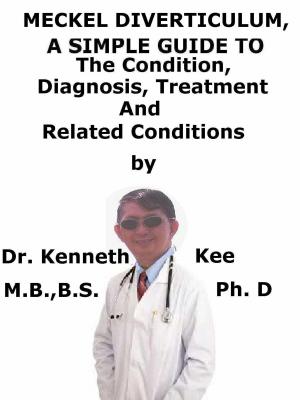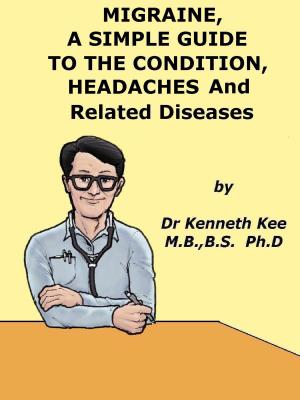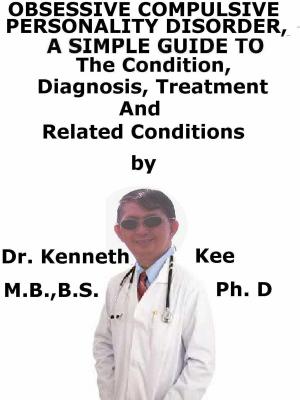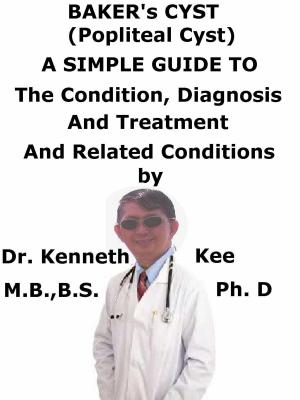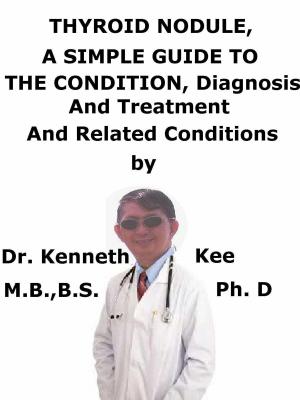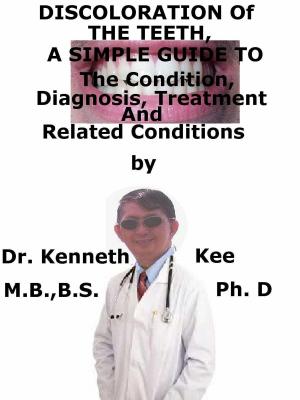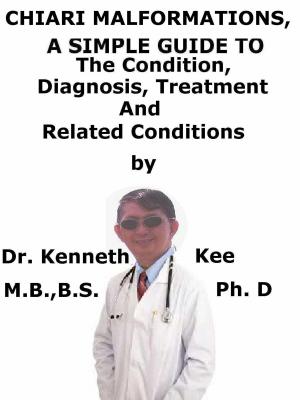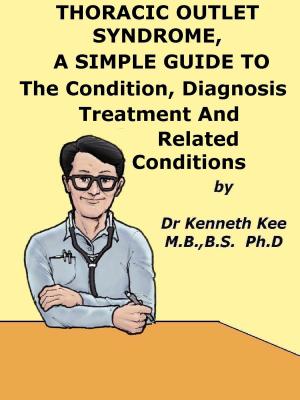Herpes Zoster, (Shingles) A Simple Guide To The Condition, Diagnosis, Treatment And Related Conditions
Nonfiction, Health & Well Being, Medical, Ailments & Diseases, Infectious Diseases, General, Health, Nervous System & the Brain| Author: | Kenneth Kee | ISBN: | 9781370112616 |
| Publisher: | Kenneth Kee | Publication: | August 22, 2017 |
| Imprint: | Smashwords Edition | Language: | English |
| Author: | Kenneth Kee |
| ISBN: | 9781370112616 |
| Publisher: | Kenneth Kee |
| Publication: | August 22, 2017 |
| Imprint: | Smashwords Edition |
| Language: | English |
Herpes zoster or Shingles is a disorder where a crop of blisters produced by the varicella zoster virus form a band across one side of the chest, abdomen or face.
The same virus that causes chicken pox causes shingles.
Basically it is an extreme form of chickenpox disease.
The name of virus that causes Shingles is Herpes Zoster Virus.
The chickenpox virus stays in a dormant state in certain nerve cells of the body from months to many years, and then reactivates producing herpes zoster.
This infection is because of a temporary reduction in the body's resistance permitting the virus to start multiplying and to travel along nerve fibers towards the skin.
Herpes zoster can occur to anyone who has had chickenpox.
If a person has had chickenpox, he or she could get Herpes zoster at any time.
There is no way to find out if or when the person will get it or how severe the case could be.
Herpes zoster is very dangerous for the health of newborn in case of pregnancy.
The rash is not the first definite sign of Herpes zoster.
The person may sense an itching, tingling, burning, or pain in a specific area on one side of the body or face.
The first symptom is a burning pain or tingling and excess sensitivity in one area of the skin.
This may exist for one to three days before a red rash occurs.
Herpes zoster may or may not have blisters formation.
The blisters in case of Herpes zoster increase in a regular pattern.
The group of blisters then forms on a red base which looks like chicken pox lesions.
The blisters normally last for two to three weeks, during which time they collect pus and then crust over and begin to go away.
Herpes zoster can be a painful, blister forming rash.
The Herpes zoster rash normally affects only one of the nerves of the body.
The painful rash most often extends along one side of the body in a band.
This band is called a dermatome which is the area supplied by one of the nerves from the spinal cord connects with the skin.
The rash can last up to 30 days.
For those people who feel the initial tingle, burning, itch or pain, the rash normally occurs on the skin in the same area.
Some people may have complications that persist after the rash has healed, like permanent scarring or changes to the color of the skin, or nerve pain that may last for months or even years.
In very rare cases, loss of hearing or vision impairment can happen when Herpes zoster affects the ear or eye respectively.
The Herpes zoster rash can cause severe, stabbing pain.
Some people may form long-term nerve pain, meaning that pain can last for months or even years after the rashes have recovered.
This is called post-herpetic neuralgia, or PHN.
The diagnostic findings are particularly, the typical site and appearance of the skin eruption in link with localized pain.
Laboratory Studies
Polymerase chain reaction (PCR) testing of vesicular fluid, a corneal lesion, or blood
Tzanck smear of vesicular fluid (lower sensitivity and specificity than PCR)
Detection of VZV DNA in plasma can confirm the early recognition of VZV infection in immunocompromised hosts.
Treatment:
The most frequent treatments for herpes zoster are:
1. Antiviral medicines, such as acyclovir, famciclovir, or valacyclovir, to reduce the pain and the duration of herpes zoster.
2. Over-the-counter pain medicines, such as acetaminophen, aspirin, or ibuprofen, to help reduce pain during an attack of herpes zoster.
3. Topical antibiotics applied directly to the skin to stop infection of the blisters.
4. For severe cases of herpes zoster, some doctors may have their patients use oral corticosteroids.
5. Antidepressant in case of depression and pain
The pain can be also relieved with cold and rest
TABLE OF CONTENT
Introduction
Chapter 1 Herpes Zoster
Chapter 2 Causes
Chapter 3 Symptoms
Chapter 4 Diagnosis
Chapter 5 Treatment
Chapter 6 Prognosis
Chapter 7 Neuropathic Pain
Chapter 8 Trigeminal neuralgia
Epilogue
Herpes zoster or Shingles is a disorder where a crop of blisters produced by the varicella zoster virus form a band across one side of the chest, abdomen or face.
The same virus that causes chicken pox causes shingles.
Basically it is an extreme form of chickenpox disease.
The name of virus that causes Shingles is Herpes Zoster Virus.
The chickenpox virus stays in a dormant state in certain nerve cells of the body from months to many years, and then reactivates producing herpes zoster.
This infection is because of a temporary reduction in the body's resistance permitting the virus to start multiplying and to travel along nerve fibers towards the skin.
Herpes zoster can occur to anyone who has had chickenpox.
If a person has had chickenpox, he or she could get Herpes zoster at any time.
There is no way to find out if or when the person will get it or how severe the case could be.
Herpes zoster is very dangerous for the health of newborn in case of pregnancy.
The rash is not the first definite sign of Herpes zoster.
The person may sense an itching, tingling, burning, or pain in a specific area on one side of the body or face.
The first symptom is a burning pain or tingling and excess sensitivity in one area of the skin.
This may exist for one to three days before a red rash occurs.
Herpes zoster may or may not have blisters formation.
The blisters in case of Herpes zoster increase in a regular pattern.
The group of blisters then forms on a red base which looks like chicken pox lesions.
The blisters normally last for two to three weeks, during which time they collect pus and then crust over and begin to go away.
Herpes zoster can be a painful, blister forming rash.
The Herpes zoster rash normally affects only one of the nerves of the body.
The painful rash most often extends along one side of the body in a band.
This band is called a dermatome which is the area supplied by one of the nerves from the spinal cord connects with the skin.
The rash can last up to 30 days.
For those people who feel the initial tingle, burning, itch or pain, the rash normally occurs on the skin in the same area.
Some people may have complications that persist after the rash has healed, like permanent scarring or changes to the color of the skin, or nerve pain that may last for months or even years.
In very rare cases, loss of hearing or vision impairment can happen when Herpes zoster affects the ear or eye respectively.
The Herpes zoster rash can cause severe, stabbing pain.
Some people may form long-term nerve pain, meaning that pain can last for months or even years after the rashes have recovered.
This is called post-herpetic neuralgia, or PHN.
The diagnostic findings are particularly, the typical site and appearance of the skin eruption in link with localized pain.
Laboratory Studies
Polymerase chain reaction (PCR) testing of vesicular fluid, a corneal lesion, or blood
Tzanck smear of vesicular fluid (lower sensitivity and specificity than PCR)
Detection of VZV DNA in plasma can confirm the early recognition of VZV infection in immunocompromised hosts.
Treatment:
The most frequent treatments for herpes zoster are:
1. Antiviral medicines, such as acyclovir, famciclovir, or valacyclovir, to reduce the pain and the duration of herpes zoster.
2. Over-the-counter pain medicines, such as acetaminophen, aspirin, or ibuprofen, to help reduce pain during an attack of herpes zoster.
3. Topical antibiotics applied directly to the skin to stop infection of the blisters.
4. For severe cases of herpes zoster, some doctors may have their patients use oral corticosteroids.
5. Antidepressant in case of depression and pain
The pain can be also relieved with cold and rest
TABLE OF CONTENT
Introduction
Chapter 1 Herpes Zoster
Chapter 2 Causes
Chapter 3 Symptoms
Chapter 4 Diagnosis
Chapter 5 Treatment
Chapter 6 Prognosis
Chapter 7 Neuropathic Pain
Chapter 8 Trigeminal neuralgia
Epilogue
